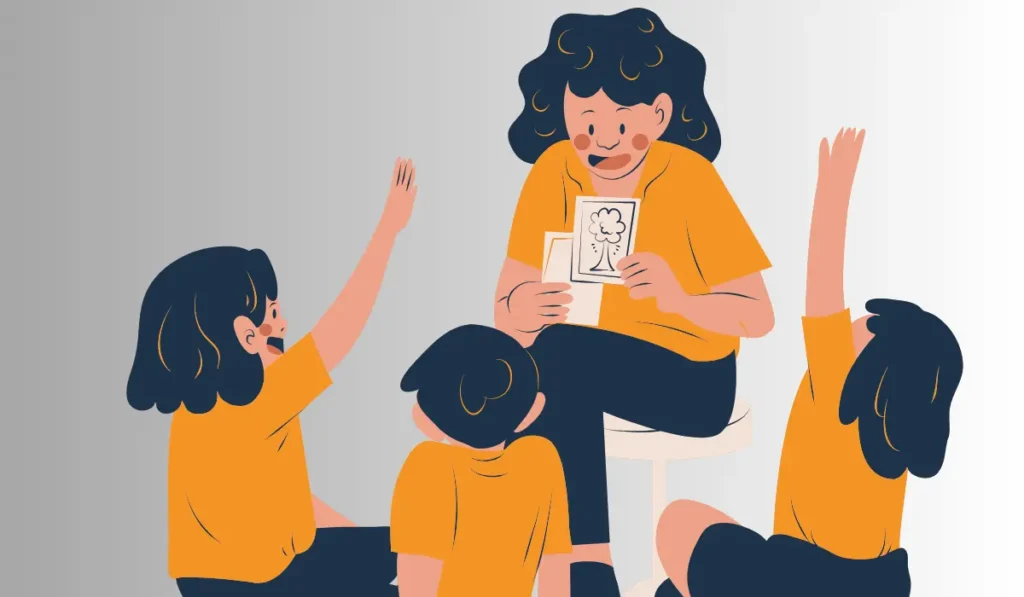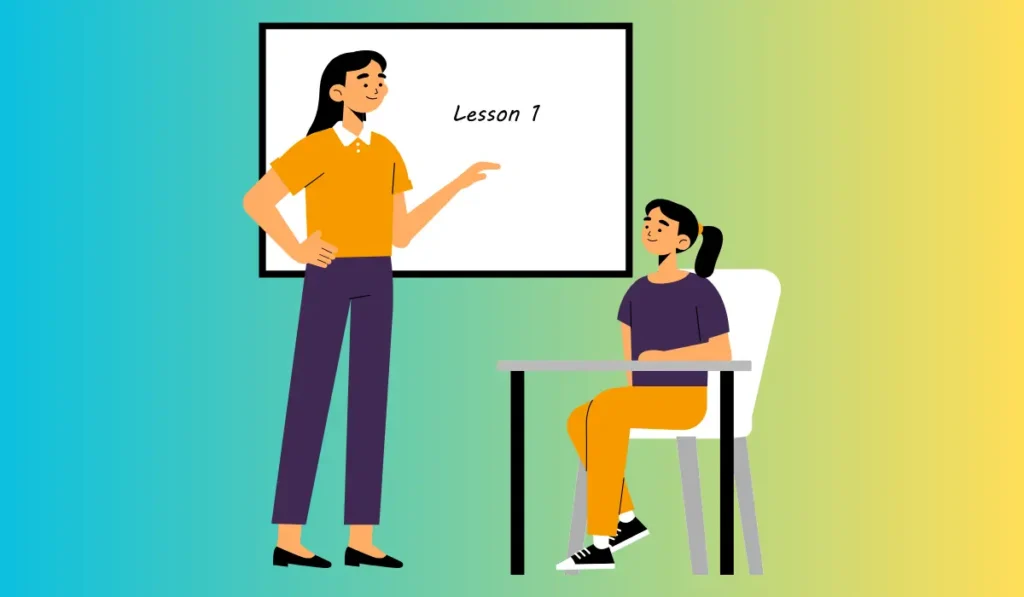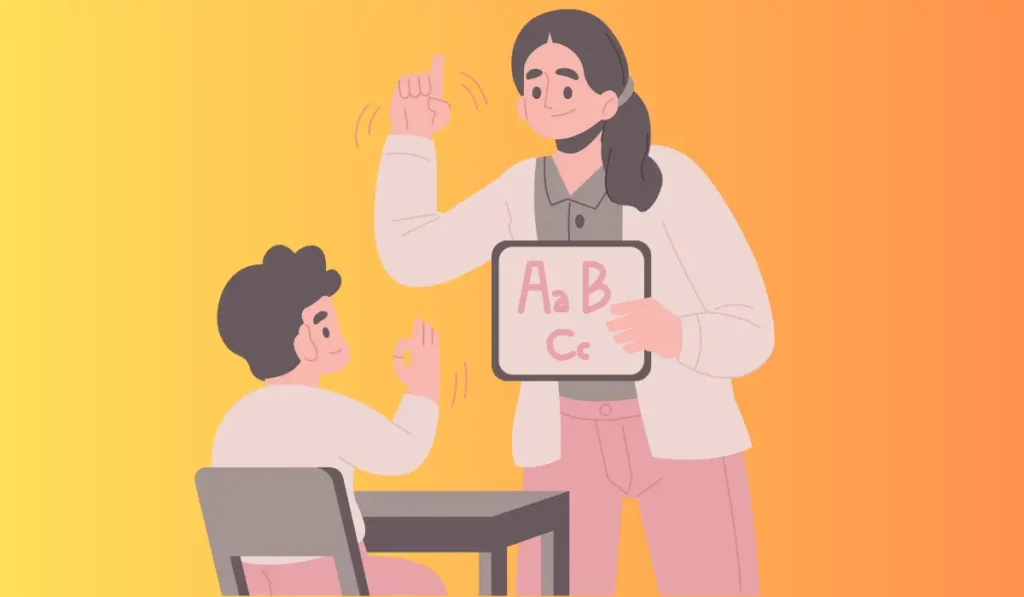Education has undergone significant changes in the past decade, with a growing emphasis on student-centered learning. Student-centered learning focuses on fostering independence, responsibility, and decision-making, increasing the students’ participation and collaboration.
However, traditional methods such as teacher-centered learning still hold relevance in specific learning contexts.
This article provides a comprehensive overview of teacher-centered learning, aiming to help teachers understand when and how to impart knowledge effectively.
Key Components Of A Teacher-Centered Classroom

In a teacher-centered classroom, the teacher is the primary authority in the room and takes on the responsibility of guiding students toward their learning objectives.
Teacher-centered methods involve ensuring that the classroom setting is structured and organized and that clear, concise lesson plans are in place.
Encouraging Collaboration And Discussion
While teacher-led instruction is the backbone of a teacher-centered classroom, it is also important to facilitate collaboration and discussion among students.
This method encourages active participation and allows students to learn from one another. The following are how teachers can encourage collaboration and discussion:
- Incorporating group work and projects into lesson plans
- Encouraging students to ask questions and challenge one another in respectful ways
- Promoting peer feedback and constructive criticism
Facilitating Student Feedback
In a teacher-centered classroom, it is important to give students regular feedback on their progress. Giving feedback allows students to become aware of their strengths and weaknesses and therefore drive their learning.
The following are how teachers can facilitate student feedback:
- Establishing clear expectations and learning objectives
- Setting regular assessments and evaluations of student progress
- Providing feedback that is specific, objective, and constructive
Monitoring And Evaluating Progress
A teacher-centered classroom requires regular monitoring and evaluation of both the teacher’s and the student’s progress. It allows for the identification of areas that need improvement and areas of success. The following are how this can be done:
- Consistently checking in with students
- Setting goals and tracking progress toward meeting those goals
- Reflecting on student feedback and reevaluating teaching methods and strategies when necessary
To conclude, a teacher-centered classroom is necessary for delivering effective instruction and ensuring that students are equipped with the necessary skills and knowledge.
Strategies For Engaging Students In Teacher-Centered Learning

Teaching has become more challenging than ever with the increase of digital gadgets and the modernization of education. In the current teaching scenario, teachers must employ a variety of teaching methods to keep students engaged in learning.
Consequently, incorporating teacher-centered learning is essential to maintain a student’s academic interest and stay engaged in the classroom.
Here are some strategies to engage students with teacher-centered learning:
Addressing Different Learning Styles
Every student has a unique way of learning, and as a teacher, you must identify and adapt to the diverse learning styles of your students. Here are some ways to address the various learning styles:
- Visual learners – use diagrams, graphs, and visual aids to explain new concepts.
- Auditory learners – create audio recordings, podcasts, and seminars to help students who prefer hearing information.
- Kinesthetic learners – introduce hands-on activities and experiments to encourage active learning.
Encouraging Active Participation
Active participation in the classroom enables students to remain engaged in the learning process and retain information well. Here are a few ways to promote active participation:
- Group activities – assign group activities, allowing students to work together and learn from their peers.
- Use of technology – use digital platforms such as Kahoot, quizlet, and Mentimeter to encourage teamwork.
- Debate sessions – set up a debate session where students can voice their opinions and learn to respect others.
Incorporating Games And Simulations
Gamification of education is a recent trend in the modernization of education. Incorporating games and simulations into the curriculum can enhance student engagement and improve the learning process.
Here are some ways to integrate games and simulations into your teaching:
- Create quests – set up virtual quests with learning objectives.
- Role-playing – introduce role-playing to encourage students to think critically and creatively.
- Simulation games – introduce simulation games, that cover real-life scenarios to prepare students for the practical world.
Effective Questioning Techniques
Asking effective questions is an essential aspect of teaching. Here are some questioning techniques that a teacher can use to stimulate critical thinking and improve academic performance:
- Probing questions – dig deeper into the complexity of a subject, leading to more insightful discussion.
- Open-ended – encourages more in-depth and thoughtful responses and avoids simple “yes” or “no” answers.
- Strategic questioning – to challenge students with specific knowledge and get them to think critically and creatively.
Employing teacher-centered learning is crucial to academic success and growth. Implementing these strategies will undoubtedly enhance the learning experience for your students and keep them engaged throughout the academic year.
The Role Of Assessments In Teacher-Centered Learning

In the present era of education, teacher-centered methods in teaching-learning are gaining popularity across educational institutions. This approach implies that the teacher is the center of the learning experience, and students are passive learners.
Under this pedagogy, teachers have more control in the classroom and can be more directive in their teaching.
Understanding The Different Types Of Assessment
The role of assessment in teacher-centered learning cannot be overstated. In testing, it’s crucial to understand the different types of assessment, which include formative and summative assessment.
Formative assessment involves continuous evaluations that occur throughout the learning process, whereas summative assessment is the evaluation at the end of the learning process.
A formative assessment is used by teachers for ongoing improvement, while a summative assessment is often treated as a benchmark assessment.
Frequently Asked Questions
What Is Teacher-Centered Teaching?
Teacher-centered teaching is a traditional approach, where the teacher is in charge of the learning process. In this approach, the teacher determines what is taught, how it is taught, and how students are assessed.
What Are The Advantages Of Teacher-Centered Teaching?
Some of the advantages of teacher-centered teaching include the teacher having full control over the learning process, faster transmission of information, and organized classroom management.
What Are The Disadvantages Of Teacher-Centered Teaching?
One of the disadvantages of teacher-centered teaching is that it does not encourage creativity or critical thinking among students.
How Can Teacher-Centered Teaching Be Improved?
Teacher-centered teaching can be improved by incorporating elements of student-centered learning.
Conclusion
To sum up, teacher-centered methods in teaching and learning have both advantages and disadvantages. Although it provides structured classroom settings and clear goals, it might suppress the creativity and critical thinking skills of the students which are crucial for their future careers. Incorporating student-centered learning activities into the curriculum can balance out the drawbacks of teacher-centered methods. These activities such as group discussions, case studies, and problem-solving tasks encourage students to think outside the box and develop their own ideas. Teachers can utilize a combination of both teacher-centered and student-centered methods to maximize the learning outcomes of their students.


